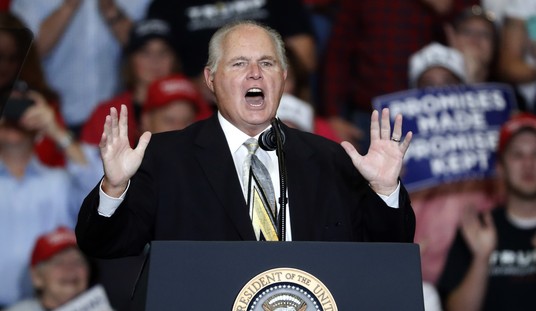President Obama has placed the Democrats in an extraordinarily dangerous position. His chicken little act about how badly the sequester cuts are going to hit the nation may blow up in his face. It will take weeks — perhaps a couple of months — before the full effect of the furloughs and cuts to services are fully felt. If the sequester plays out in slow motion, Obama will lose all credibility.
The national media, by and large, is following the White House line of dire consequences if the sequester goes through. Washington Post:
With the ax set to fall on federal spending in five days, the question in Washington is not whether the sequester will hit, but how much it will hurt.
Over the past week, President Obama has painted a picture of impending disaster, warning of travel delays, laid-off firefighters and pre-schoolers tossed out of Head Start. Conservatives accuse Obama of exaggerating the impact, and some White House allies worry the slow-moving sequester may fail to live up to the hype.
The good news is, the world doesn’t end March 2. The bad news is, the world doesn’t end March 2,” said Emily Holubowich, a Washington health-care lobbyist who leads a coalition of 3,000 nonprofit groups fighting the cuts. “The worst-case scenario for us is the sequester hits and nothing bad really happens. And Republicans say: See, that wasn’t so bad.”
How twisted does one’s priorities have to be in order to say that the “worst case scenario” for the sequester is if nothing much bad happens? Wow.
“It would be a big problem for the White House if the sequester came and went and nobody really noticed anything. Then people will start saying, ‘Well, maybe we can cut spending,” said John H. Makin, a resident scholar at the conservative American Enterprise Institute who penned a recent Wall Street Journal piece titled “Learning to Love the Sequester.”
Adding to the liberal angst is concern that the scale of the cuts may be overstated, at least in the short term. While the sequester orders the White House to withdraw $85 billion in spending authority from affected agencies in the fiscal year that ends in September, the nonpartisan Congressional Budget Office predicts that agencies will reduce actual spending by only about $44 billion, with the remaining cuts carried over into future years.
Compared with total 2013 discretionary spending, that’s a cut of less than 4 percent.
The impact will be magnified, however, because of certain exemptions — military payrolls, for example — and because it must be compressed into seven months rather than being spread out over 12. As a result, some agencies, notably the Pentagon, are contemplating cuts to nonexempt accounts of as much as 17.5 percent.
Still, managers at many agencies have been bracing for the cuts, postponing purchases and new hires so they can protect employees and the public from the very disruptions to core services that would draw headlines.
“This is the Catch-22,” said Richard Kogan, a former Obama budget official now at the left-leaning Center on Budget and Policy Priorities. “The problem would be solved faster if it was literally a disaster. But making it a disaster is not what agency managers really want to do.”
Oh my goodness. Agency managers are going to have to work for a living and come up with ways to save money and still get the job done.
Does this mean that many agencies could do the same job for less money? Perish the thought.
Nobody knows which side is right. I suspect that the GOP is right in the short term, but that there will be some serious problems at the defense department over the longer term. It doesn’t matter. However it turns out, the president will try to spin the results to his advantage even if the cutbacks don’t affect much of anything.










Join the conversation as a VIP Member